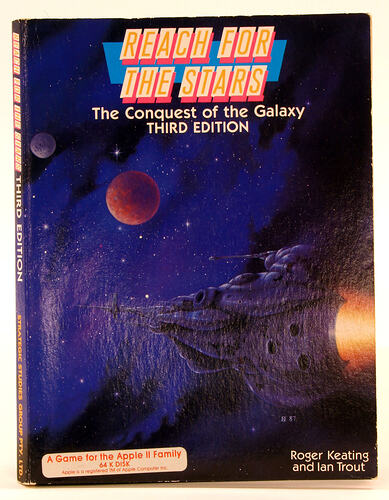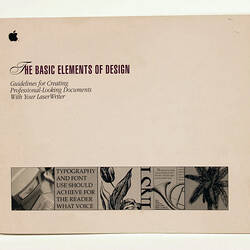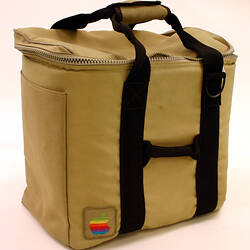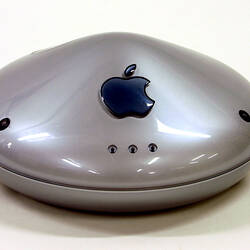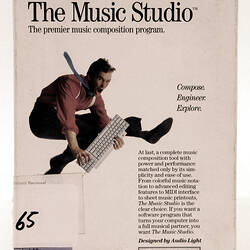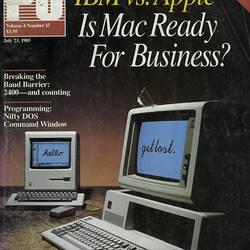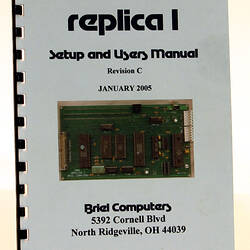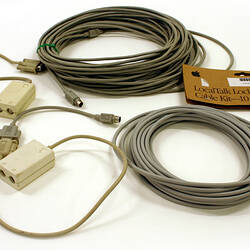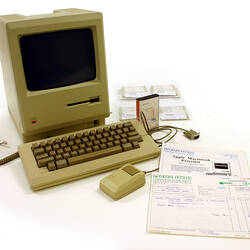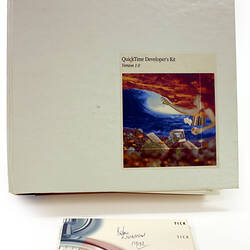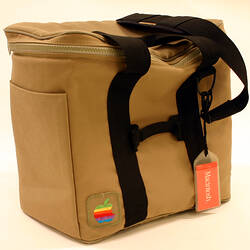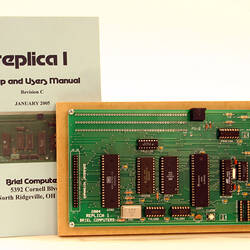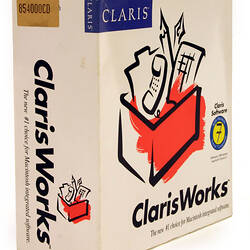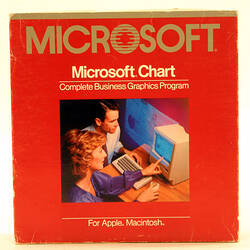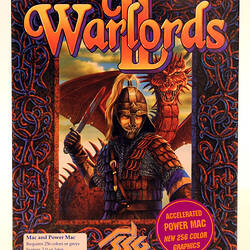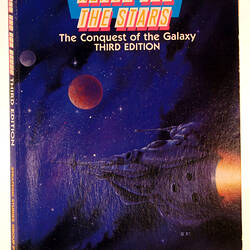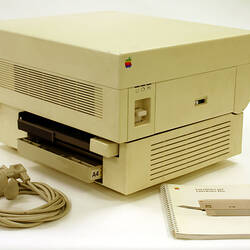1. The Collection - an overview
2. The Apple Story
3. Origins and Philosophy of Apple Computer Inc. 1971-75
4. Stages in the history of the Apple Company
5. A conclusion 2002
The Collection - an overview
This collection comprises over 90 items of computer hardware and software that tells the story of the contribution made by Apple Computer Inc to the emergence of the personal computer and the way in which it has impacted on the computer industry and society. The collection is a representative sample of material that reveals trends and developments in information and communication technology. It includes the computers and peripheral devices that evidence significant advances in technology or changes in the direction of computing and the major genres of software that changed the way in which we work and learn and play.
The collection includes 12 computer systems, 10 peripheral devices, system software, software for word processing, painting and drawing and image manipulation, page layout, database development, spreadsheeting, the recording editing and playback of sound and video, as well as games, many of them developed in Australia. The collection also includes an iPod.
The collection was acquired by members of the Internet Macintosh User Group Inc (iMug) pursuant to a policy developed by Museum Victoria's Senior Curator in Information and Technology, David Demant with six members of iMug, and approved by Museum Victoria in June 2005. The items were supplied by 36 users of computers manufactured by Apple, most of whom lived in Victoria and were a member of a user group-Internet Macintosh User Group Inc or Apple Users' Society of Melbourne Inc or both. Most of the donors used the computers professionally in education or business, but they or their children also used them for leisure activities.
The Apple Story
The history of the social impact of the Personal Computer on contemporary society is one paralleled by the history of the Apple Company. Apple's originators, Steve Jobs and Steve Wozniak ('the two Steves'), exemplified the creativity and innovative thinking of their generation and fostered these traits in their business. Since Apple's commencement in Silicon Valley, California, it has persevered with an underlying ethos of changing the world through the design of 'insanely great' products, to paraphrase Jobs, who, having left Apple in 1985, returned as CEO of Apple in 1997.
Despite its small market share, the PC world continues to look to Apple for its quality of design, innovative thinking and breakthrough products. Because it has always controlled both the hardware and software of its products, this synergy has allowed Apple to profitably pursue new developments in technology which other makers monitor closely, but are rarely able to emulate to the same high standard.
Over its more than 30 year history, Apple's products have encapsulated the dreams of those who believe technology can enhance society, and who aim to bring advanced computing to the general population without the need to learn arcane languages.
3. Origins and Philosophy of Apple Computer Inc. 1971-75
The Apple Computer Inc. was founded by Steve Jobs and Steve Wozniak in 1976. The two Steves met in high school in 1971. In the few years that followed, each found casual employment in Silicon Valley's developing computer industry - Jobs working for Atari and Wozniak for Hewlett Packard.
They began experimenting in their own time, for example with phreaking - the method of getting free long distance calls. Phreaking had an element of antiestablishment and another well known computing figure,Bill Gates stayed clear of it. Jobs was far more antiestablishment than Wozniak who was more a practical joker.
4. Stages in the history of the Apple Company
Several stages have been identified in the history of the Apple Computer Company from 1976 to 2002. These stages are not necessarily chronological and, in fact, some overlap in time.
Apple I Launched 1976
Corporate Rise 1977-1983
The Graphic User Interface 1983-1984
Desktop Publishing 1985-1991
Imaging 1987-1994
Cable Networking 1984-1991
Portability 1979 onwards
Digital Video 1991
Apple loses its way 1991-1996
Return to Roots 1996-1999Return to Roots 1996-1999
MegaHertz War Myth 1994-2005
UNIX adopted 1999 and 2001
Wireless connectivity introduced 1999
Music for the Millions 2001onwards
5. A conclusion 2002
The Apple collection contains items representing the period 1976 to 2002. From its inception, Apple has developed a loyal following amongst the creative industries: motion pictures, television, music, writing and publishing, theatre and now personal publishing because of its legendary ease of use, and the desire of Apple's leadership to bring exceptional creative tools to those who use computers to assist their creative process.
The history of Apple's products reflects a genealogy not just of technical advances, but also those of human-computer interface research: how to best match technologies with human abilities, as opposed to the other way around. To this end, Apple and its products have attempted not just to meet the computing needs of its consumers, but also to lead with new products not yet seen as relevant to consumers, but which in time have been seen as almost prophetic in nature. The digital hub lifestyle and bringing new developments in music and video creation to the consumer is a part of that original vision of Steve Jobs to make 'insanely great' products that will change the world.
More Information
-
Keywords
-
Authors
-
Article types
